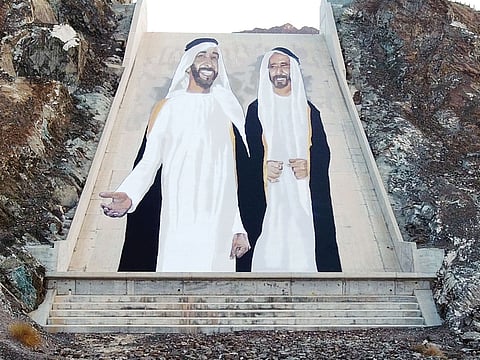How geopolitical landscapes shape our world
Historic Seih Al Sedira meeting in the UAE became as iconic as No. 10 Downing Street in UK

Politics is full of pivotal moments that change the course of history and shape the modern geopolitical landscape. These moments are linked to a significant place and location, from Ancient Greece to the Roman Empire, and all the way through our contemporary world order.
The place-conscious method molds identities and traditions, all of which drive the social and political scene.
Three key components that comprise a place: it must be fixed in space, a specific location on the map. Next, people should be able to meet there frequently.
Lastly, it should carry some type of distinction, differing from other sites by holding a historical significance or sentimental connection. These two examples reveal how a particular place plays a vital role in the formation of politics and history.
The first is the most famous address in England, as well as the most well-known black door in the world. The door is marked with No. 10 and bears a majestic brass lionhead door knocker. Situated in Westminster, this place has for three hundred years served as the home and office for the United Kingdom’s seventy-seven Prime Ministers.
Also Read: A critical turning point for the UN at 75
The Downing Street No. 10 iconic building was presented by King George II to the First Lord of the Treasury, Sir Robert Walpole and the first Prime Minister, who requested to make the property an official residence, thus beginning the tradition that continues today.
In 1985, Margaret Thatcher stated that No. 10 had become “one of the most precious jewels in the national heritage.” The historic door became an iconic representation of the British government’s history and values. Two world wars were managed from behind its walls. Additionally, it witnessed the recent post-Brexit trade agreement.
Two modest tents
For the second example, we consider the small hill between the border of Abu Dhabi and Dubai called “Seih Al Sedira,” home to two modest tents populated by six men, and the place where the formation of the United Arab Emirates was agreed upon between the late Sheikh Zayed, the Ruler of Abu Dhabi, and Late Sheikh Rashid, Ruler of Dubai, and sealed with a historic handshake on 18 February 1968.
Three years later, the Emirates’ unity was celebrated with the raising of a flag, symbolising the day that the constitution came into effect. His Highness Sheikh Mohammed bin Rashid Al Maktoum, Vice-President and Prime Minister of the UAE and Ruler of Dubai was present on that remarkable day.
As is the Arabic tradition, being the youngest member that day, he served the two leaders coffee. Later celebrating the 50th anniversary of that iconic meeting, also known as “Al Sameeh Meeting,” he tweeted, “From that day we started, from that day we agreed, and from that day, we began our march together.”
That significant day shaped the Arabian Gulf region’s geopolitics, particularly when the UK abruptly withdrew after 100 years of influence.
Dr. Fatima Al Sayegh, professor of history at UAE University, wrote, “The Al Sameeh meeting, hence, marked the beginning of a golden era in the history of the region. It paved the way for the establishment of a unique country that has become a model in various areas of development.”
Roots and belonging are at the heart of the places and events that shape our political reality. However, within a globalised world, where people can travel or even connect in virtual meetings, will place mainly be in the “abstract form”?
Ruqayya Alblooshi is a UAE columnist and researcher in International Relations. Twitter: @ruqayya82
Sign up for the Daily Briefing
Get the latest news and updates straight to your inbox







